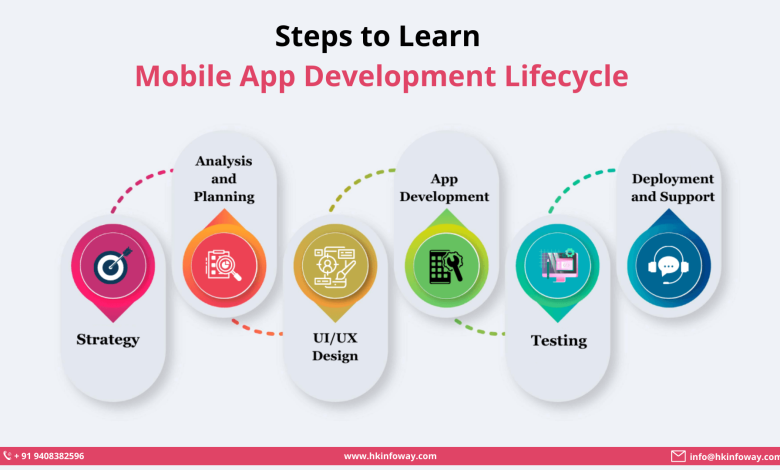8 Steps to Learn Mobile App Development Lifecycle

When you hire a company to develop your app, it will go through a definite mobile app development life cycle, whether you choose android app development services or iOS app development services.
Though mobile app development is a long and continuous process, you can divide it into eight steps. Here you will have a rough understanding of all these eight steps of the mobile app development lifecycle.
Research and Plan
Research and plan is the first step of the mobile app development lifecycle. Before starting the planning process, it is crucial to conduct substantial research and brainstorming sessions.
In this step, you will need to find out the objective of the application and who will be the users of it. Answering these questions will give you insights into your target audience.
You will also need a detailed analysis of your competition. Check your competitor apps to see what features they have. Try to find out missing functionalities and incorporate them into your app to make it stand out in the market.
Technical Feasibility Assessment
In the second stage, you need to determine whether the platform will support the functionality of your application. Examining the feasibility study of your application idea is an essential step.
You will have different requirements for android and iOS app development. The platform format will also require a slightly different backend based on whether the app is for mobile, tablet, wearable, or television.
At the end of this step, you may find some of the functionalities are not feasible to implement in your app. And hence you want to rethink and review those functionalities.
Wireframes and Prototyping
Now is the time to sketch out the look of your application. The technical term for this sketching process is called wireframing. It helps you determine the clear flow and navigation of your application. There are online tools that can help you create wireframes.
You will also create a prototype once creating the wireframes. Prototyping enables you to determine the look and feel of your mobile application. Prototyping will clear an understanding of the connection among different screens of the end-user journey.
Designing
Once you gain a clear understanding of the flow of your application, the design phase takes place. Here, User Interface (UI) and User Experience (UX) Designers come into play. Generally the Android and iPhone app development company you choose will have a team of designers that will look for this step.
The wireframe created in the previous step will effectively help here. UI designers will create the look and feel of the application, whereas UX designers build the interaction between different design elements. While designing, ensure to maintain the balance between the content and UI.
Development
Mobile app development involves several steps, which you will have to consider. You have to set up the databases, storage solutions, servers, and APIs for the backend of your app if you are not using any mobile app development platform or mobile BaaS provider.
The development stage involves coding. It is the stage where you can recruit from and hire dedicated android developers from all the decided features and make them functional. Sometimes, the testing phase goes along with the development process.
Quality Testing
Once you complete the app with visuals and functioning features, you will have to check for the technical flaws and bugs and correct them before the launch.
It is a good idea to start testing at an earlier stage of development. As the development process continues, it gets more laborious to clear the bugs.
You have to test your app rigorously in various real-world scenarios. You can use various automation tools that simplify the testing process without human efforts.
Make sure to check for cross-platform compatibility, load testing, and security breaches while testing.
Deployment
After eliminating all the bugs and technical flaws that could decrease the performance, your app will be ready to launch. It is essential to have a developer account in the app publishing platforms.
Thoroughly read guidelines to avoid rejection of your app when you send it to review. In this stage, you may want to involve your marketing team.
Marketing professionals will conduct a thorough App Store Optimization and ensure the ranking of your application.
Your app will go through a review process session by respective app publishing platforms before it becomes available to download for its users.
Maintenance
Though this is the last step of mobile app development, the process doesn’t end here. In fact, it is a new beginning for your app and business. The mobile app development continues even after you launch your application.
As users start using your app, they will give their feedback, which you should incorporate their suggestions into your application.
You will continuously upgrade and update your app as per the changing technology and user requirements. Remember, user satisfaction is the key to success for mobile applications.
Final Thoughts
Though mobile app development is a continuous process, it still can be wrapped up into eight steps, at least initially, when your app is in your mind.
To realise it, you will first conduct research and planning, followed by technical feasibility and wireframes and prototyping.
In the design step, you will create the look and feel of your app. And when done with that, you will implement features and test them.
Finally, you will launch the app and start an ever-going maintenance process.


